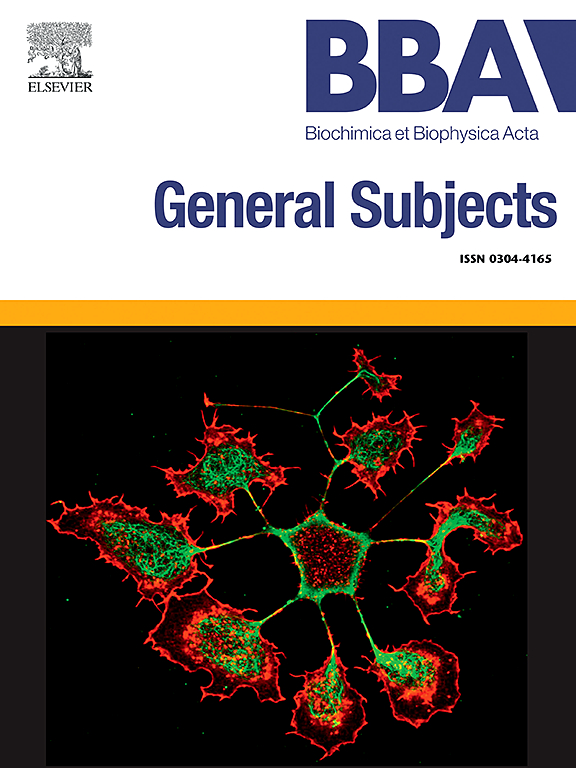细果酸:系统获得性抗性和植物免疫的积极调节剂
IF 2.2
3区 生物学
Q3 BIOCHEMISTRY & MOLECULAR BIOLOGY
Biochimica et biophysica acta. General subjects
Pub Date : 2025-04-17
DOI:10.1016/j.bbagen.2025.130808
引用次数: 0
摘要
果酸(Pip)是一种天然存在的非蛋白质氨基酸,在植物对病原体感染的反应中积累。Pip在自噬突变体中上调,表明其通过上调系统性获得性抗性(SAR)作为植物免疫的重要调节因子。这种广谱防御机制在随后的病原体攻击中保护植物未感染的部分。Pip被确定为SAR化学信号,在NO-ROS-AzA-G3P之前起作用。Pip的生物合成从赖氨酸开始,通过ALD1和SARD4的活性依次进行;赖氨酸转氨酶ALD1将赖氨酸分解为Δ - 1-哌替啶-2-羧酸,通过SARD4的鸟氨酸环脱氨酶活性进一步修饰为Pip。此外,黄素单加氧酶fmo1催化Pip合成n -羟基胡椒果酸(NHP,最终的sar诱导防御激素)。Pip及其活性形式在韧皮部的感染部位积累,并通过共质体运输到植物的远端部位,从而触发SAR。本文主要综述了Pip和NHP在调节SAR中的作用,以及它们如何与水杨酸(SA)等其他防御信号相互作用以调节植物免疫。本文章由计算机程序翻译,如有差异,请以英文原文为准。
Pipecolic acid: A positive regulator of systemic acquired resistance and plant immunity
Pipecolic acid (Pip) is a naturally occurring non-protein amino acid, that builds up in plants in response to pathogen infection. Pip is upregulated in autophagy mutants, indicating its role as a crucial regulator of plant immunity by upregulating systemic acquired resistance (SAR). This broad-spectrum defense mechanism protects uninfected parts of the plant during subsequent pathogen attacks. Pip has been identified as a SAR chemical signal and acts before the NO-ROS-AzA-G3P. The biosynthesis of Pip begins with lysine by the activity of ALD1 and SARD4 in a sequential manner; ALD1, a lysine aminotransferase, catabolizes lysine to Δ 1-piperidine-2-carboxylic acid, which is further modified to Pip by the activity of ornithine cyclodeaminase activity of SARD4. Additionally, FMO 1, a flavin monooxygenase, catalyzes the synthesis of N-hydroxy-pipecolic acid (NHP, the final, SAR-inducing defense hormone) from Pip. Pip and its active form accumulate at the infection site in the phloem and are transported to distal parts of the plant via symplast to trigger SAR. This review focuses on the roles of Pip and NHP in regulating SAR and how they interact with other defense signals like salicylic acid (SA) to modulate plant immunity.
求助全文
通过发布文献求助,成功后即可免费获取论文全文。
去求助
来源期刊

Biochimica et biophysica acta. General subjects
生物-生化与分子生物学
CiteScore
6.40
自引率
0.00%
发文量
139
审稿时长
30 days
期刊介绍:
BBA General Subjects accepts for submission either original, hypothesis-driven studies or reviews covering subjects in biochemistry and biophysics that are considered to have general interest for a wide audience. Manuscripts with interdisciplinary approaches are especially encouraged.
 求助内容:
求助内容: 应助结果提醒方式:
应助结果提醒方式:


